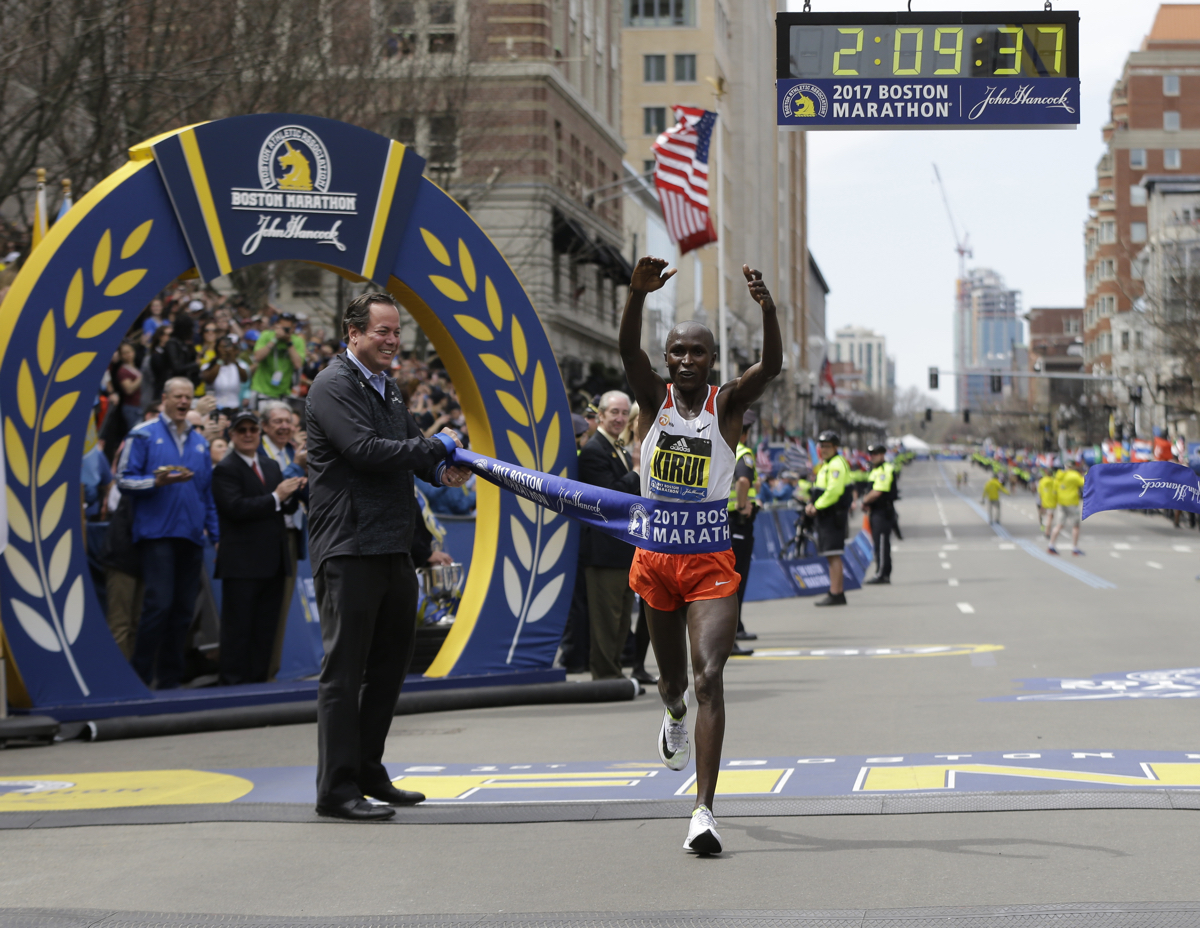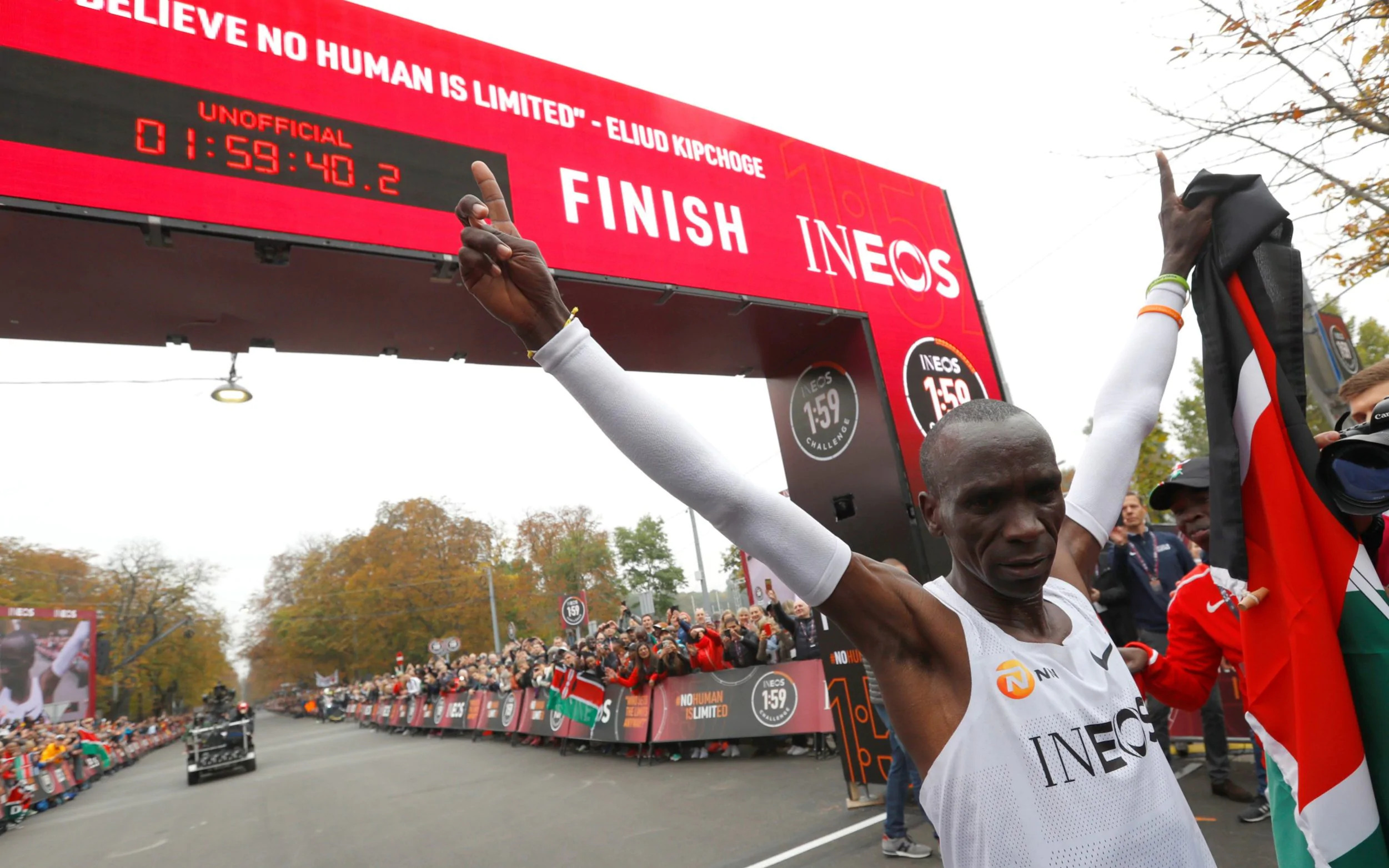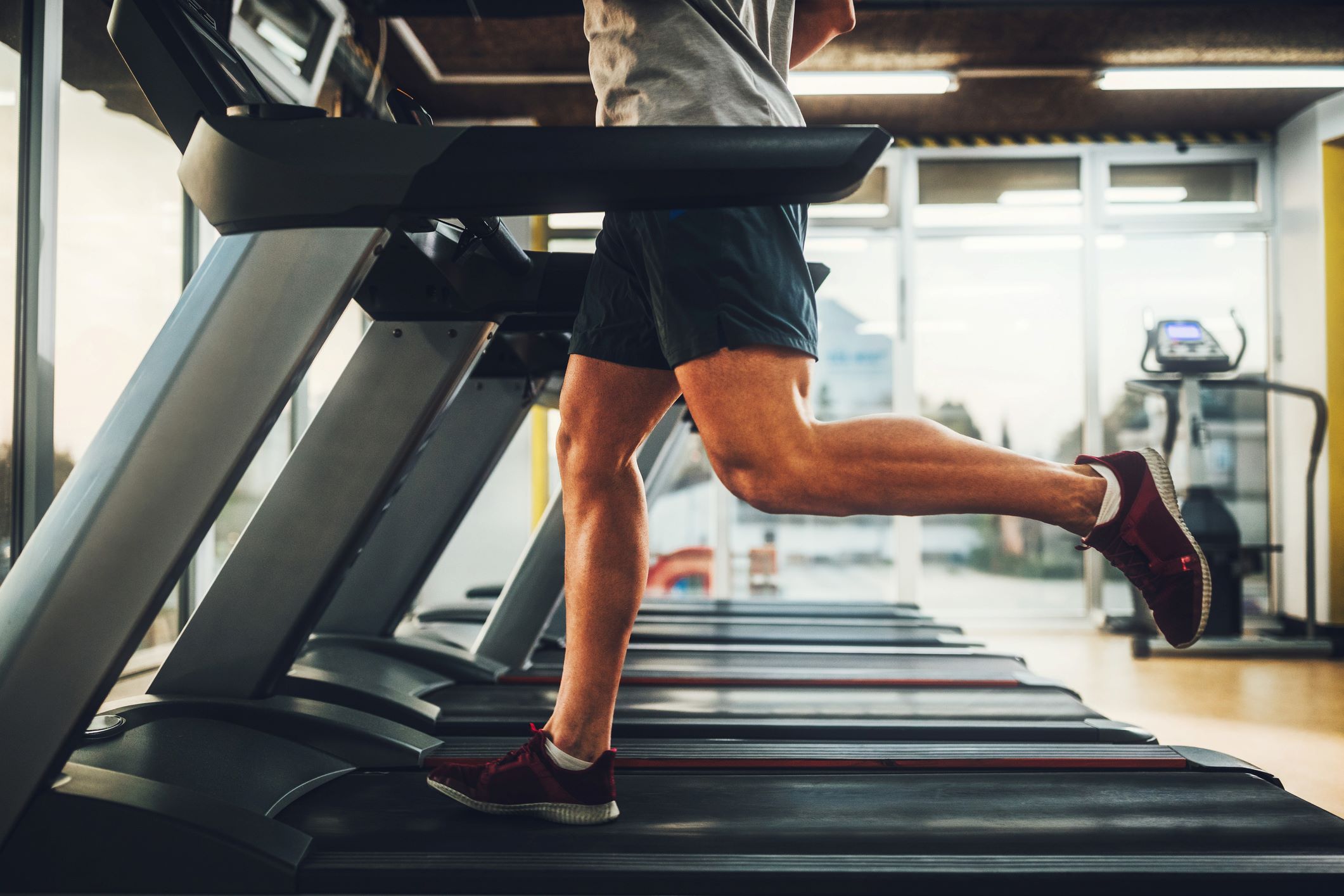Home>Misc>Featured>Alex Is 230 Lbs. He Just Finished A 30-Minute Run At A 10mph Pace. How Many Calories Did He Expend?


Featured
Alex Is 230 Lbs. He Just Finished A 30-Minute Run At A 10mph Pace. How Many Calories Did He Expend?
Modified: August 21, 2023
Find out how many calories Alex expended during his 30-minute run at a 10mph pace. This featured article provides the answer you're looking for.
Introduction
When it comes to maintaining a healthy lifestyle, exercise plays a crucial role. Not only does it help in weight management, but it also improves cardiovascular health, boosts mood, and increases overall fitness levels. For those looking to shed a few pounds, understanding calorie expenditure during exercise is essential.
Calories are units of energy that our bodies need to function. During physical activity, we burn calories as our muscles work and our heart rate increases. The number of calories expended during exercise varies depending on various factors, including weight, intensity, duration, and exercise type.
In this article, we will explore in detail the concept of calorie expenditure during exercise, the factors that influence it, and how to calculate it. Using the example of Alex, who weighs 230 lbs and just finished a 30-minute run at a pace of 10mph, we will calculate the number of calories he expended during his workout.
By understanding the science behind calorie expenditure during exercise and learning how to calculate it accurately, individuals can make informed decisions about their workout routines and tailor them to their specific goals, whether it be weight loss, maintenance, or overall fitness improvement.
Understanding Calorie Expenditure During Exercise
Calorie expenditure during exercise refers to the number of calories burned by the body while engaging in physical activity. It is important to understand that the body constantly burns calories even at rest, but the calorie burn significantly increases during exercise.
The key determinants of calorie expenditure during exercise include:
- Weight: The more a person weighs, the more calories they are likely to burn during exercise. This is because it takes more energy to move a heavier body.
- Intensity: The level of exertion during exercise affects the calorie burn. Higher intensity activities like running or cycling at a fast pace will burn more calories compared to lower intensity activities like walking.
- Duration: The longer the duration of exercise, the more calories are burned. However, the rate of calorie burn may decrease over time as the body becomes more efficient.
- Exercise Type: Different types of exercises engage different muscle groups and require varying levels of energy expenditure. Activities like swimming, cycling, and running tend to burn more calories compared to resistance training or lower impact exercises.
It is important to note that calorie expenditure during exercise can vary from person to person. Factors such as age, gender, body composition, and fitness level can also influence the number of calories burned during a workout.
To get an estimate of the calories burned during exercise, individuals can use various tools, such as fitness trackers, online calculators, or heart rate monitors. These tools provide an approximation based on the individual’s weight, activity type, and duration, but it’s important to remember that they are not 100% accurate.
Understanding how many calories are burned during different types of exercise can help individuals tailor their workout routines to meet their specific goals. Whether it is weight loss, improving cardiovascular fitness, or building muscle, knowing the calorie burn can guide individuals to make informed decisions about their exercise regimens.
Factors Influencing Calorie Expenditure
Calorie expenditure during exercise is influenced by a variety of factors. Understanding these factors can help individuals better understand the amount of energy they are burning during their workouts.
1. Weight: As mentioned earlier, weight plays a significant role in calorie expenditure. A person with more weight will generally burn more calories due to the additional energy required to move their body.
2. Intensity: The level of intensity during exercise directly affects the calorie burn. Higher intensity activities, such as running or high-intensity interval training (HIIT), require more energy and, therefore, burn more calories compared to lower intensity activities like walking or gentle yoga.
3. Duration: The duration of exercise also affects the total calorie burn. Generally, the longer the workout, the more calories are burned. However, it’s important to note that as the body becomes more efficient with prolonged exercise, the rate of calorie burn may decrease slightly.
4. Exercise Type: Different types of exercises engage different muscle groups and require varying levels of energy expenditure. Cardiovascular activities like running, swimming, or cycling tend to burn more calories compared to strength training or flexibility exercises.
5. Fitness Level: A person’s fitness level can impact the number of calories burned during exercise. Individuals who are more fit tend to burn fewer calories for the same activity compared to those with lower fitness levels. This is because fit individuals are more efficient at performing exercises.
6. Age: Age plays a role in calorie expenditure during exercise. Generally, younger individuals tend to have higher metabolic rates and may burn more calories during physical activity.
7. Gender: Gender can also influence calorie expenditure. On average, men tend to burn more calories during exercise compared to women due to their higher muscle mass.
It is important to acknowledge that these factors are not independent of each other and can interact in complex ways to determine calorie expenditure. Individual variations and genetics can also impact calorie burn.
By considering these factors, individuals can gain a better understanding of their calorie expenditure during exercise. This knowledge can help them make informed decisions about their workout routines and adjust their activities to meet their fitness goals effectively.
Calculation of Calorie Expenditure
Calculating calorie expenditure during exercise involves using a formula that takes into account various factors such as weight, intensity, and duration of the activity.
One commonly used formula to estimate calorie burn during exercise is the MET (Metabolic Equivalent of Task) formula. The MET value represents the energy expended during an activity compared to the person’s resting metabolic rate.
The formula to calculate the calorie expenditure is as follows:
Calories Burned = MET Value x Resting Metabolic Rate (RMR) x Duration (in hours)
The MET value of an activity is a measure of its intensity. Different activities have different MET values, ranging from low-intensity activities (e.g., walking) to high-intensity activities (e.g., running).
The resting metabolic rate (RMR) is the number of calories burned by the body at rest. It is influenced by factors such as age, gender, weight, and body composition.
To calculate calorie expenditure, you can multiply the MET value of the activity by your RMR and the duration of the activity in hours.
It is important to note that the MET formula provides an estimate and may not be 100% accurate for everyone. However, it serves as a good starting point to gauge the approximate number of calories burned during exercise.
For a more accurate estimation, individuals can use wearable fitness trackers or heart rate monitors that take into account additional factors like heart rate variability and individual characteristics.
Remember that the calorie expenditure calculated through these formulas is an estimate and can vary depending on individual factors and the accuracy of the data inputted.
By utilizing the MET formula or other tools, individuals can gain a better understanding of their calorie expenditure during exercise. This knowledge can help them track their progress, set realistic goals, and make adjustments to their workouts to achieve their desired fitness outcomes.
Alex’s Weight and Running Pace
To calculate the number of calories Alex expended during his 30-minute run at a 10mph pace, we first need to consider his weight and running pace.
Alex weighs 230 lbs, which is an important factor in determining calorie expenditure. As mentioned earlier, individuals with higher weight generally burn more calories during exercise due to the additional energy required to move their bodies.
Furthermore, Alex’s running pace is 10mph, which indicates a high-intensity activity. Running at a faster pace requires more effort and, consequently, leads to a higher calorie burn compared to lower intensity activities such as walking or gentle jogging.
Depending on an individual’s fitness level and running experience, a 10mph pace can be considered quite fast. It requires a significant amount of cardiovascular endurance and muscle strength to sustain this pace for a longer period of time.
It’s important to note that running pace can vary among individuals. Some people may naturally be faster runners, while others might need to work their way up to a 10mph pace.
Alex’s weight and running pace contribute to a higher calorie expenditure during his run. With this information, we can proceed to calculate the approximate number of calories he burned during the 30-minute session.
By taking into account these essential details, we can accurately estimate the energy expenditure during Alex’s run and understand the impact of his weight and running pace on the overall calorie burn.
Calculating Calorie Expenditure for a 30-Minute Run at a 10mph Pace
Now that we have considered Alex’s weight of 230 lbs and his running pace of 10mph, we can proceed to calculate the number of calories he expended during his 30-minute run.
First, we need to determine the MET value for running at a 10mph pace. Running has a MET value of approximately 8.0.
Next, we need to convert the duration of the run into hours. Since Alex ran for 30 minutes, which is equivalent to half an hour, we will consider the duration as 0.5 hours.
Now, we can use the following formula to calculate the calorie expenditure:
Calories Burned = MET Value x Resting Metabolic Rate x Duration (in hours)
Assuming Alex has a resting metabolic rate (RMR) of 1,800 calories per day, we can calculate his calorie expenditure as follows:
Calories Burned = 8.0 (MET Value) x 1,800 (RMR) x 0.5 (Duration) = 7,200 calories
Therefore, Alex burned approximately 7,200 calories during his 30-minute run at a pace of 10mph.
It’s important to note that this is an estimated calculation and may not be 100% accurate for Alex or other individuals. The formula provides a starting point to gauge calorie expenditure and can vary based on individual factors such as fitness level, metabolism, and body composition.
For a more accurate calculation, Alex can consider using a heart rate monitor or fitness tracker that takes into account his heart rate, age, weight, and other individual parameters.
By calculating the approximate calorie expenditure for his specific running session, Alex can better understand the impact of his workout on his overall energy balance and adjust his diet or exercise regimen accordingly.
Conclusion
Understanding calorie expenditure during exercise is vital for individuals striving to maintain a healthy lifestyle and achieve their fitness goals. By comprehending the factors that influence calorie expenditure and knowing how to calculate it, individuals can make informed decisions about their workout routines and monitor their progress effectively.
In this article, we explored the concept of calorie expenditure during exercise and its various determinants, including weight, intensity, duration, exercise type, fitness level, age, and gender. These factors interact in complex ways to determine the number of calories burned during physical activity.
We also discussed the calculation of calorie expenditure using the MET formula, which takes into account the MET value of an activity, resting metabolic rate (RMR), and duration. While this formula provides an estimate, it serves as a helpful tool to gauge calorie burn during exercise. It is important to note that individual variations and the accuracy of the data inputted can impact the calculated results.
By applying the concepts discussed in this article to the example of Alex, who weighs 230 lbs and ran at a pace of 10mph for 30 minutes, we were able to calculate his approximate calorie expenditure during the workout. This calculation demonstrates how weight and intensity can significantly impact calorie burn, leading to a higher energy expenditure.
Ultimately, understanding calorie expenditure during exercise empowers individuals to make informed decisions about their fitness routines and adapt them to achieve their desired goals, whether it be weight loss, improvement in cardiovascular fitness, or general well-being.
It is important to note that while exercise is a vital component of a healthy lifestyle, it should be complemented with a balanced diet and proper rest to optimize overall well-being.
By incorporating this knowledge and monitoring calorie expenditure during exercise, individuals can take control of their fitness journey and have a clear understanding of their progress and achievements.







